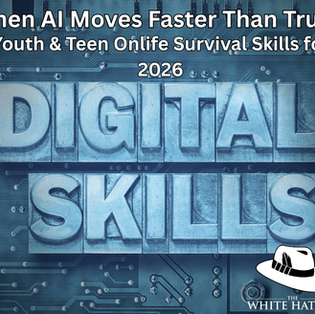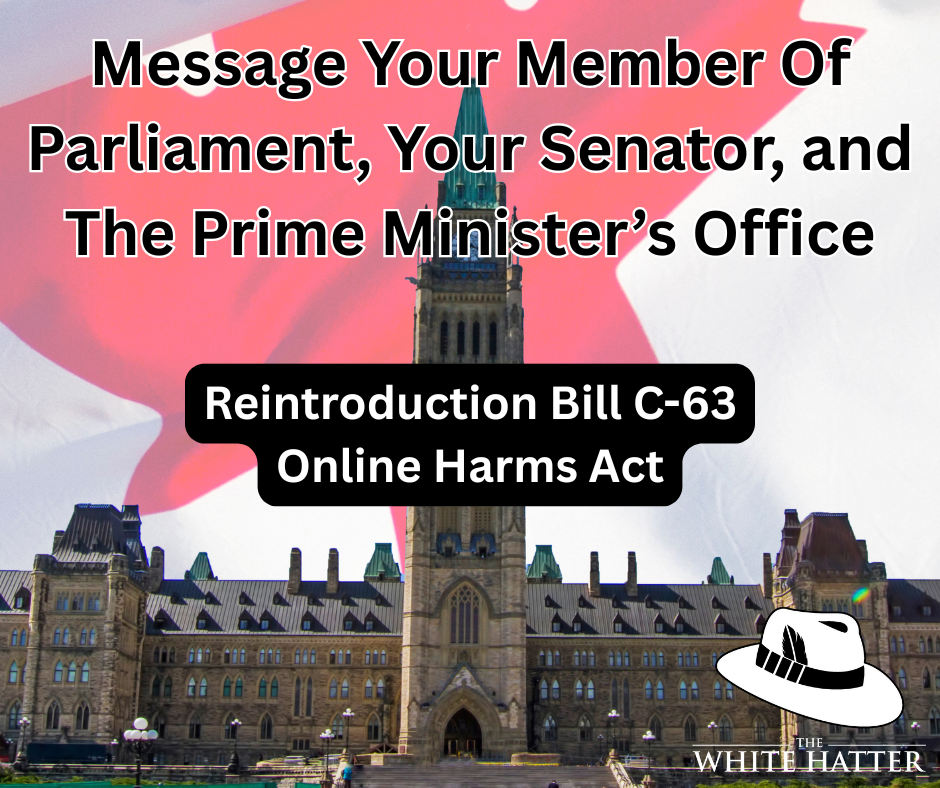Contrary To What Some In Our Industry Say, Parents and Caregivers CAN Compete With Big Tech!
- The White Hatter

- Sep 21
- 5 min read

When it comes to technology, the internet, social media, and digital platforms, it’s easy for parents and caregivers to feel outmatched. Yes, companies like Meta, TikTok, and YouTube have billions of dollars and massive teams behind them, shaping the way content is designed, delivered, and consumed. With this kind of influence, there are those in our industry who push the message that parents and caregivers don’t stand a chance and can’t compete against Big Tech, but this just isn’t true.
Pushing the idea that parents and caregivers are powerless against Big Tech is not only misleading, it’s dangerous. It suggests that nothing can be done, leaving families feeling defeated before they even start. The truth is more encouraging, Big Tech is not all powerful, and youth and teens are not passive tech zombies. If parents and caregivers believe they are powerless, their influence weakens. However, if they believe they matter, their influence strengthens!
The fact is Big Tech’s influence isn’t absolute. For decades, research in communication and education has shown that meaning is not something media simply hands to its audience. Instead, meaning is created through an exchange between media and the person engaging with it. A video, meme, or trending sound may spark attention, but how a young person interprets it is shaped by the values, conversations, and examples they encounter in their everyday life. This means parents and caregivers have far more influence than they often realize, and they can bring a lot to the table.
Parents and caregivers are not competing with algorithms on their own. They bring something to the equation that Big Tech can’t, lived connection with their child. By modelling healthy digital habits, encouraging open dialogue, engaging together in their use of tech, and guiding their child’s choices, parents and caregivers can play a decisive role in shaping how the “majority” of youth and teens understand and respond to online content.
Conversation Matters
Yes, when youth and teens scroll through their feeds, they are being bombarded with videos, memes, ads, and opinions. Without guidance, they can take these at face value. However, talking with your child about what they are seeing gives them a chance to pause, reflect, and form their own perspective.
Ask questions instead of giving lectures such as, “What do you think that post is trying to say?” or “Why do you think this trend is popular?”
Share your own reactions. Let them know how you interpret content and why. This models critical thinking in real time.
Create space for disagreement. If your child sees something differently, resist the urge to shut it down. Honest back and forth helps them sharpen their reasoning skills.
The more these conversations happen, the more natural it becomes for kids to analyze what they see instead of blindly absorbing it.
Modelling Matters
Youth and teens learn more from what parents and caregivers do than what they say. If parents and caregivers spend hours scrolling, check notifications during dinner, or react emotionally to online posts, kids notice. On the other hand, when parents and caregivers model balance, healthy skepticism, and respectful digital behaviour, it sets a standard that carries weight.
Show balance. Put your phone down during family time. Let kids see that screens don’t always take priority.
Show skepticism. When you come across questionable content, say it out loud, “That headline looks exaggerated, let me double-check before I share it.”
Show respect. Post online the way you’d want your kids to. No snark, no name calling, no pile ons. Children learn digital civility by watching adults practice it.
Your example teaches kids how to live with technology, not just use it. As we stated in another article, anxious parents create anxious kids! (1)
Guidance Matters
Rules without explanation can feel like punishment. Guidance means giving your youth and teen clear boundaries while also helping them understand the reasoning behind them. When kids know the “why,” they are more likely to respect the rule and carry it into their own decision making.
Set age-appropriate limits. Younger kids may need more time restrictions, while teens benefit from co-creating agreements about usage.
Explain the reasoning. Instead of “No phones in your bedroom,” try “We keep devices out of bedrooms because sleep is important, and late-night scrolling can interfere with rest.”
Encourage ownership. Let your youth or teens be part of setting family tech guidelines. Involving them gives them a sense of responsibility.
Boundaries framed with respect and clarity feel less like control and more like support and action. Telling parents and caregivers they can’t compete against Big Tech builds doubt, which undermines support and action. However, belief strengthens influence and expectancy matters!
However, conversation, modelling, and guidance are not quick fixes. They are habits built over time that put parents and caregivers in the driver’s seat when it comes to shaping how kids understand technology, and yes this takes effort. Big Tech may influence the content, but parents influence the meaning kids take away from it. This is why we preach, “Be your child’s best parents and now their best friend when it comes to technology, the internet, and social media.”
If we accept the belief that Big Tech is too powerful, which we don’t promote here at the White Hatter, we risk giving up on one of the most important jobs parents and caregivers have, that is helping kids grow into thoughtful, resilient digital citizens. Technology, the internet, and social media has reach, but it doesn’t have absolute power. The decisive factor is how young people interpret what they encounter, and that’s where parents and caregivers come in.
When parents and caregivers believe their presence, words, and example shape how their child uses technology, they lean in more confidently. Youth and teens pick up on that belief, and it becomes part of how they frame their own onlife world. We have anecdotally found that when parents and caregivers don’t lean in , bad things happen!
Yes, social media has reach, but it doesn’t have absolute power. The decisive factor is how young people interpret what they encounter, and parents and caregivers shape that meaning every day.
So the next time you hear that Big Tech is too big to beat, remember what Yoda said, “try means failure.” Don’t try to compete, know you already are and just do it. So while the screen may hold their eyes, your words, your presence, and your example hold their understanding, and Big Tech can’t compete with that, so let’s leverage this fact as parents and caregivers!
Digital Food For Thought
The White Hatter
Facts Not Fear, Facts Not Emotions, Enlighten Not Frighten, Know Tech Not No Tech
Reference:














